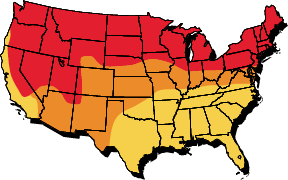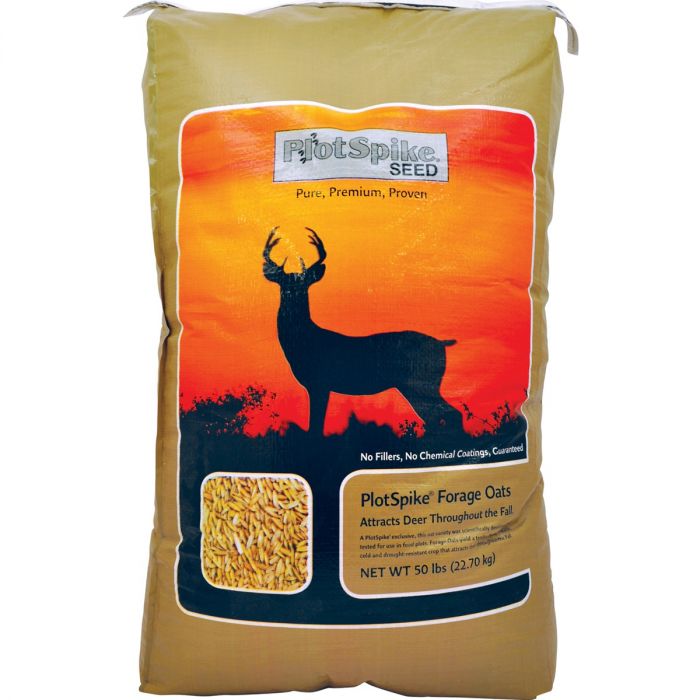Forage Oats Food Plot Seed
Exclusive early-season forage nutrition.
If you’re looking for a fantastic early season forage solution for your deer plot, look no further than our exclusive forage oats. This chemical- and filler-free blend is for southern climates but does offer some cold resistance compared to other common forage varieties. University trials have shown that it’s capable of producing over 10,000 lbs./acre.
Forage Oats can be planted in August and September for grazing during bow season. Once plants emerge, they also respond very well to high-nitrogen fertilizers like ammonium nitrate (34-0-0). Southern food plots will last all winter, but oat food plots north of Tennessee or at high elevations will most likely freeze out.
Ingredients
A PlotSpike exclusive, this oat variety was scientifically developed and tested for use in food plots. Forage Oats yield a tender, highly palatable, cold and drought resistant crop the attracts deer throughout the Fall.
Specifications
Seed species: Oats
Coverage Area: 1/2 acre
Mature Height: 36 inches
Where to use:
In a well-prepared seed bed that gets some sunlight and adequate moisture.
When to use:

YELLOW: Plant September/October. Deer utilize from Fall to Spring. Freeze out is unlikely.
ORANGE: Plant late August. Planting will normally produce good forage until severe weather sets in at 15–20°F and below.
RED: August planting will produce forage until severe cold begins. Freeze out will occur every year.
NOTE: PlotSpike Forage Oats are very cold-tolerant, but no oat is freeze proof or drought proof. Planting done in red areas or desert climates will normally result in loss of crop. Freeze out frequently ocrurs when warm, late fall or winter growing conditions are followed by sudden, extreme temperature drops.
How to use:
For best results, plant in a well-prepared bed.
- Plant seeds from 1/4 inch to 1-1/2 inches deep
- Adequate moisture is required for proper germination
- Lime according to soil test and fertilize periodically with high nitrogen fertilizer
- Plant 50 lbs. per 1/2 acre

